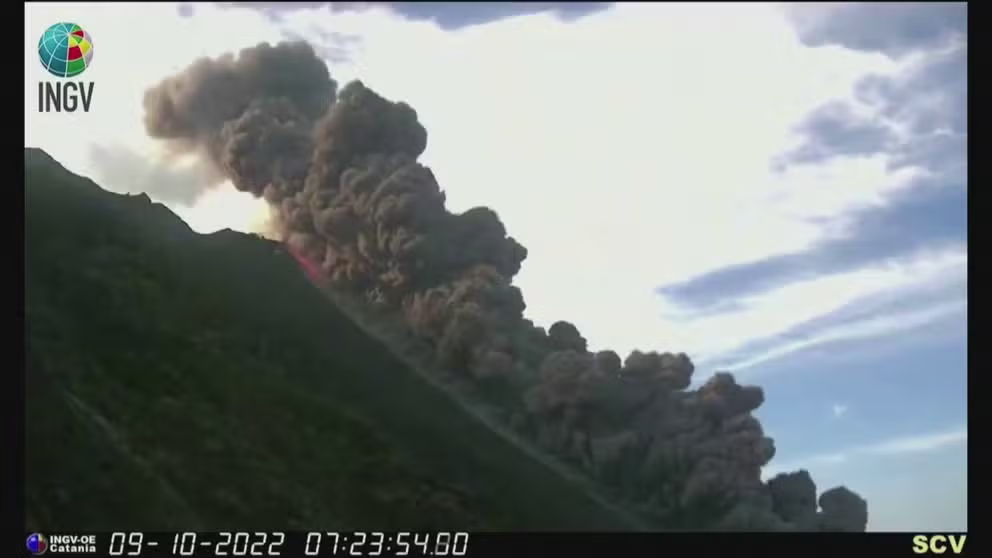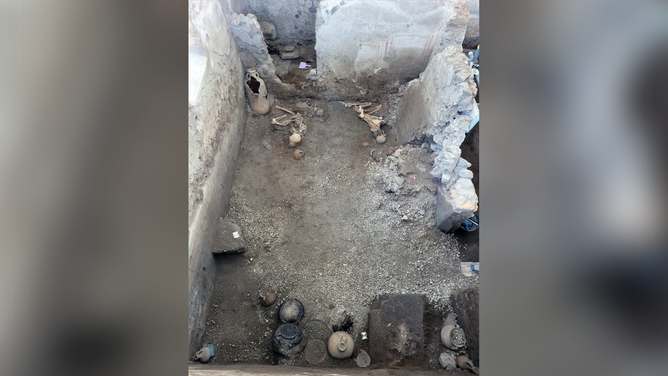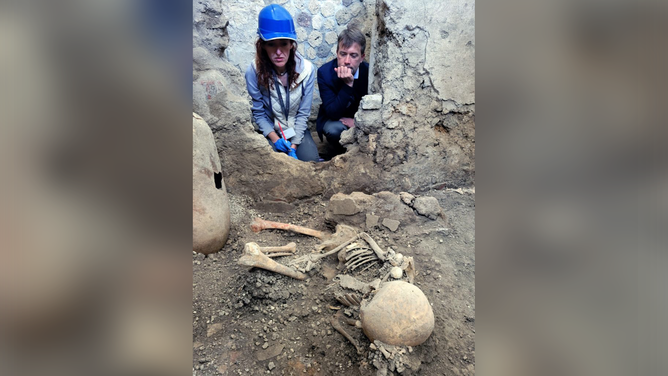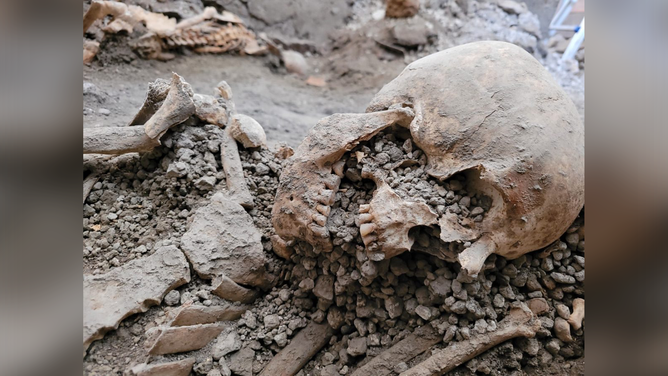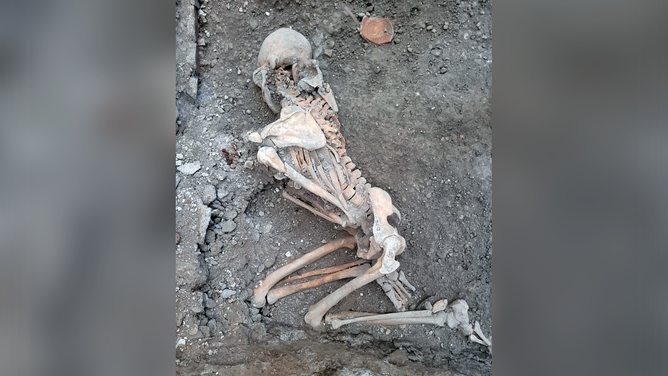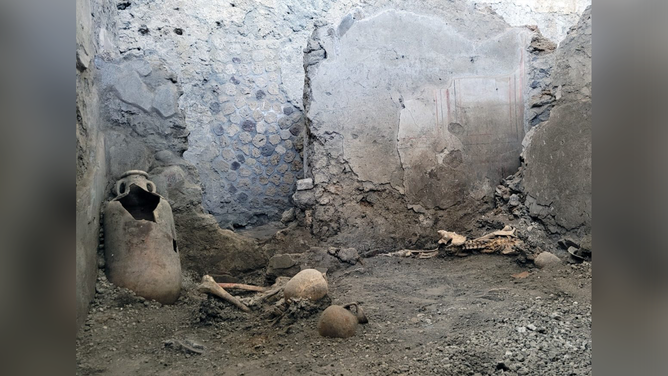Two skeletons found in Pompeii suggest earthquakes during Vesuvius eruption led to deaths
Archeologists made additional discoveries during the excavation including an upright amphora, traces of organic matter believed to be bundles of fabric, elements of glass paste which could have been the beads to a necklace and six coins.
Watch: Video shows volcano erupting on Italian island of Stromboli
A volcano on the Italian island of Stromboli erupted over the weekend, unleashing a pyroclastic flow and lava that reached the Tyrrhenian Sea.
Two skeletons found buried beneath a collapsed wall at the Pompeii archeological site in Italy suggest it wasn’t only the eruption of Mount Vesuvius in 79 AD that led to the deaths of the ancient city’s residents but also a series of violent earthquakes.
It was a scene of pure chaos and confusion for the residents of Pompeii during the infamous eruption of the volcano that showered the city with pumice, ash and hot, poisonous gasses.
Earthquakes, too, struck fear in those who were trying to escape.
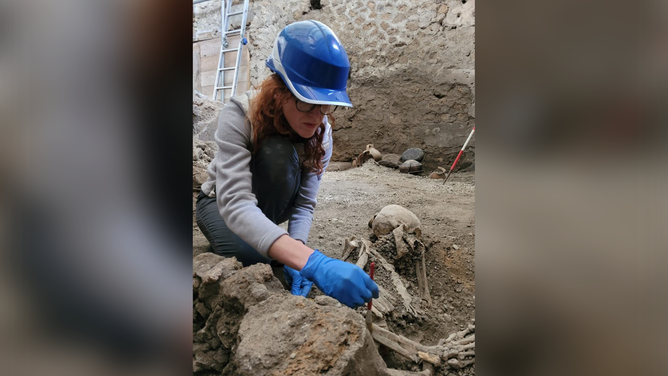
An archeologist is seen collecting data from a skeleton discovered at the Pompeii Archaeological Site.
(Pompeii Archaeological Site)
This includes the two new victims discovered under a collapsed wall during an excavation of the Insula of the House of Chaste Lovers at the archaeological site, according to a news release.
The two victims, whom archeologists estimated to be about 55 years old, were found lying on one side of a utility room that likely wasn’t being used at the time of the eruption due to repairs or renovation work that was underway.
There they had taken refuge in an attempt to protect themselves from the eruption.
WATCH: MEXICO'S POPOCATEPETL VOLCANO ERUPTS TWICE, SPEWS LAVA INTO THE SKY
Data from the on-site anthropological analysis showed that both victims probably died due to multiple traumas caused when the building began to collapse during an earthquake.
"Part of the south wall of the room collapsed, crushing one of the men whose raised arm offers a tragic image of his vain attempt to protect himself from the falling masonry," read the press release.
In addition, evidence showed that conditions of the western wall showed the extreme force of the earthquake at the time of the eruption, with the entire upper section detaching and falling into the room, crushing and burying the other victim.
WATCH LAVA FLOW IN THESE MESMERIZING VOLCANIC ERUPTIONS AROUND THE WORLD

Amphoras and other items were also found near where the two skeletons were discovered at the Pompeii Archaeological Site.
(Pompeii Archaeological Site)
"The discovery of the remains of these two Pompeians in the context of the construction site in the Insula of the Chaste Lovers shows how much there is still to discover about the terrible eruption of AD 79 and confirms the necessity of continuing scientific investigation and excavations," said Italy’s Minister of Culture Gennaro Sangiuliano. "Pompeii is an immense archeological laboratory that has regained vigor in recent years, astonishing the world with the continuous discoveries brought to light and demonstrating Italian excellence in this sector."
Archeologists made additional discoveries during the excavation, including an upright amphora, which is a tall jar with two handles and a long neck, near one of the skeletons.
Traces of organic matter were also discovered, which are believed to be bundles of fabric, as well as elements of glass paste which could have been the beads to a necklace and six coins.
